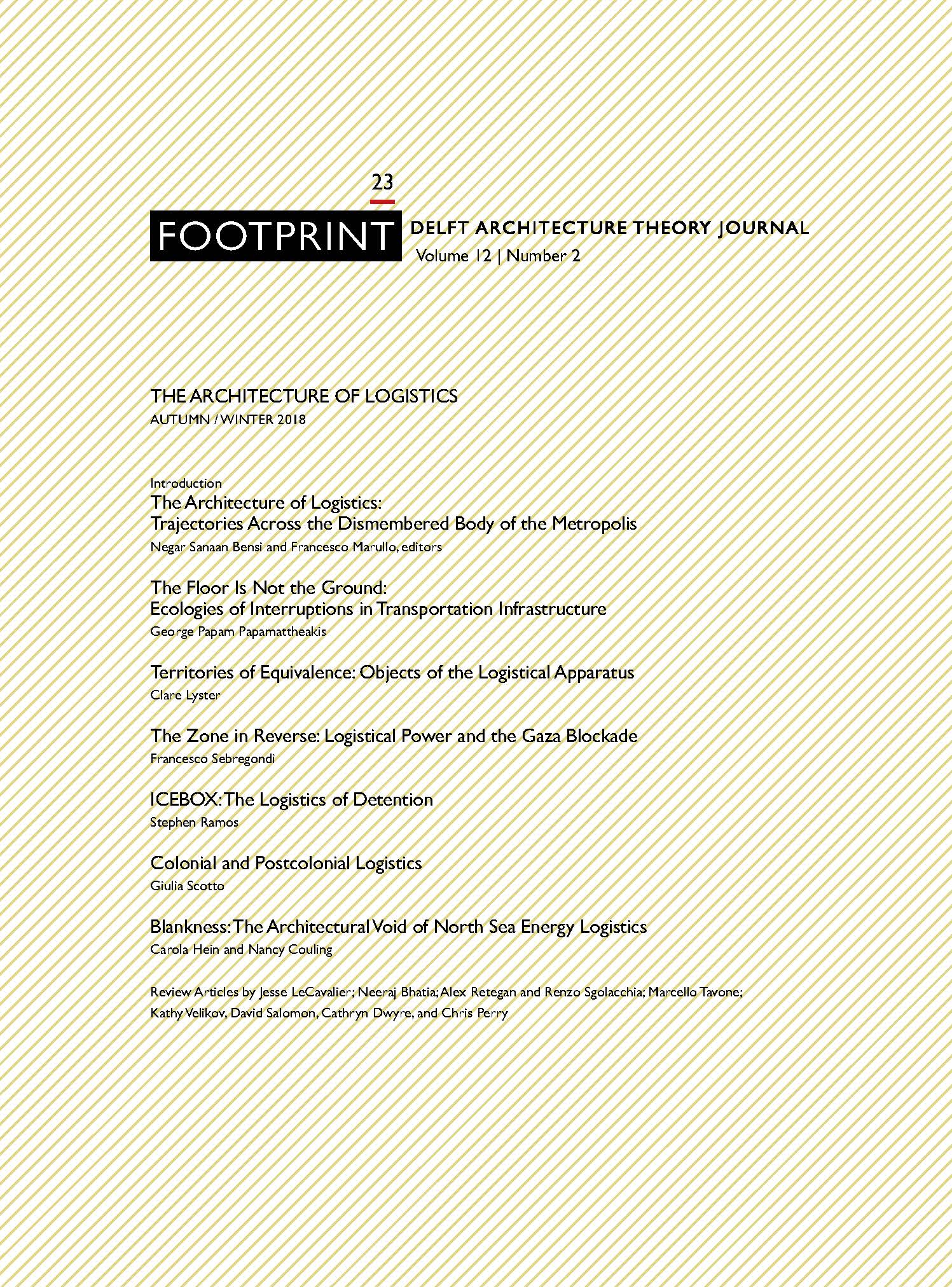HomeWorks
DOI:
https://doi.org/10.7480/footprint.12.2.2036Abstract
What if the city of the twenty-first century was not as we have imagined it? What if the culture of congestion was swept away by an isotropic, weak and diffused urban reality; by the culture of dispersion? A nebulous and potentially limitless city freed from any physical and symbolic centre, where uncertain attempts of urbanity overlap with the idealised landscape of the countryside.
From this perspective, the central area of the Veneto region in Italy can still be considered a laboratory that produces urban and architectural forms for the contemporary city. The Veneto territory is here considered as a palimpsest, as the product of a slow and incessant process of accumulation of traces, elements, attempts, which have been overlapping throughout centuries.
This article presents only a few of the layers that compose the image of this region; they serve as evidence in the investigation of the role that anthropisation processes have played in the continuous modification of the landscape. Within this frame, the ‘architecture of logistics’ is presented as one of the elements that have imposed a pervasive economic-political control of the territory, to the point of producing specific forms of living.
References
Agamben, Giorgio. The Kingdom and the Glory: For a Theological Genealogy of Economy and Government. Stanford: Stanford University Press, 2012.
Ackerman, James S. The Villa: Form and Ideology of Country Houses. Princeton: Princeton University Press, 1990.
Arendt, Hannah. The Human Condition. Chicago: University of Chicago Press, 1998 [1958].
Aureli, Pier Vittorio. The Possibility of an Absolute Architecture. Harvard: MIT Press, 2011.
Bialasiewicz, Luiza. ‘The Geographies of production and the contexts of politics: dis-location and new ecologies of fear in the Veneto città diffusa.’ Environment and Planning D: Society and Space, vol. 24 (2006): 41–67.
Bonomi, Aldo. Il capitalismo molecolare. Turin: Einaudi, 1997.
Branzi, Andrea. Modernità debole e diffusa. Milan: Skira, 2006.
Corboz, André. ‘Le Territoire comme palimpseste’, Casabella 516 (1985): 22–27.
Djalali, Amir. ‘Prehistories of Common Space: Conflict and Abstraction in Renaissance Architecture’ in The City as a Project, ed. Pier Vittorio Aureli, 102–136. Berlin: Ruby Press, 2013.
Elden, Stuart. The Birth of Territory. Chicago: University Of Chicago Press, 2013.
Eurostat. http://ec.europa.eu/eurostat.
Glossary of the Council of Supply Chain Management Professionals, www.cscmp.org.
Gregotti, Vittorio. ‘Architettura come modificazione.’ Casabella 498–499 (1984): 2–7.
Innocenti, Raimondo.ed. Piccola città e piccola impresa. Milan: Franco Angeli, 1985.
Koolhaas, Rem, Stefano Boeri, Sanford Kwinter, Nadia Tazi, and Hans Ulrich Obrist. Mutations: Rem Koolhaas, Harvard Project on the City, Stefano Boeri, Multiplicity, Sanford Kwinter, Nadia Tazi, Hans Ulrich Obrist. Barcelona: ACTAR, 2000.
Lord, Carnes. Aristotle’s Politics. Chicago: University of Chicago Press, 2013.
Mandurino, Katy. ‘Da abbattere o riconvertire. La scelta del Veneto sui capannoni vuoti.’ Il Sole 24 Ore, 9 February 2018.
Marullo, Francesco. ‘Logistics Takes Command. Architecture, Warfare, Abstraction.’ Log 35 (Autumn 2015): 103–120.
Munarin, Stefano, and Maria Chiara Tosi. Tracce di città. Milan: Franco Angeli, 2002.
‘Meet Leonardo del Vecchio.’ Luxottica website, last updated 17 February 2018. http://www.luxottica.com/en/meet-leonardo-vecchio
Negri, Antonio, and Michael Hardt. Empire. Harvard: Harvard University Press, 2000.
Palladio, Andrea. I quattro libri dell’architettura. Milan: Enrico Hoepli Editore, 2014 [1570].
Pasolini, Pier Paolo. Saggi sulla politica e sulla società. Milan: Mondadori, 1999.
Pollione, Marco Vitruvio. De Architectura trans. L. Migotto. Pordenone: Edizioni Studio Tesi, 1999 [1486].
Schmitt, Carl. The Nomos of the Earth in the International Law of the Jus Publicum, trans. G. L. Ulmen. Candor, NY: Telos Press, 2003 [1979].
Secchi, Bernardo. ‘Progetto di suolo.’ Casabella 520 (1986): 19–23.
Viganò, Paola. ‘Water and Asphalt, The project of Isotropy in the Metropolitan Region of Venice.’ Architectural Design, vol. 78 (2008): 34–39.
Viganò, Paola. I Territori dell'urbanistica. Il progetto come produttore di conoscenza. Milan: Officina, 2010.
Downloads
Published
Issue
Section
License
- Authors retain copyright and grant the journal right of first publication with the work simultaneously licensed under a Creative Commons Attribution License that allows others to share the work with an acknowledgement of the work's authorship and initial publication in this journal.
- Authors are able to enter into separate, additional contractual arrangements for the non-exclusive distribution of the journal's published version of the work (e.g., post it to an institutional repository or publish it in a book), with an acknowledgement of its initial publication in this journal.




